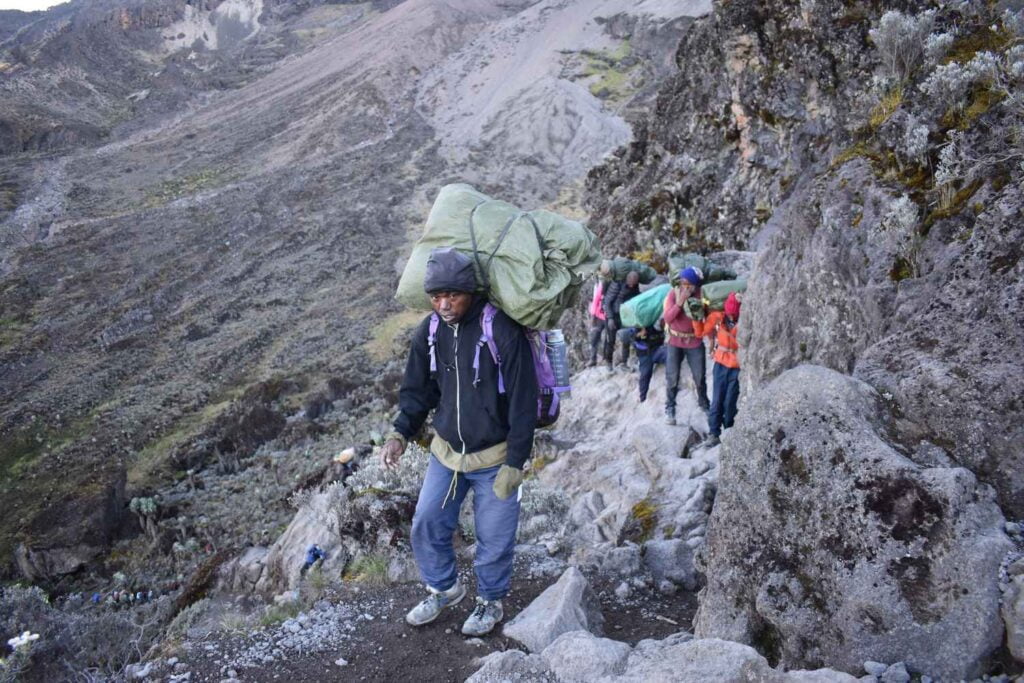
Trekking in Africa offers thrilling adventures and unforgettable experiences, but it also comes with inherent risks, particularly concerning wildlife encounters and emergencies. Ensuring your safety and the safety of those around you is paramount for a successful trekking expedition. In this blog post, Future African Safari provides comprehensive guidelines and tips on managing wildlife encounters and handling emergencies while trekking in Africa.

1. Understanding African Wildlife Behavior
Common Wildlife You May Encounter:
- Big Five: Lion, Elephant, Buffalo, Leopard, and Rhinoceros.
- Other Species: Giraffes, zebras, antelopes, and various bird species.
Behavioral Insights:
- Predatory Instincts: Understanding the hunting patterns and triggers of predators can help in anticipating their movements.
- Social Structures: Knowing the social dynamics of herd animals can aid in avoiding disturbances.
- Territoriality: Recognizing territorial behaviors in animals like lions and leopards helps in maintaining a safe distance.
2. Best Practices for Safe Wildlife Encounters
Maintain a Safe Distance:
- Use binoculars or telephoto lenses to observe wildlife without encroaching on their space.
- Avoid sudden movements or loud noises that may startle animals.
Stay Calm and Composed:
- If you encounter wildlife, remain calm and avoid panicking.
- Slowly back away without turning your back on the animal.
Follow Guide Instructions:
- Always adhere to the advice and directions provided by your experienced trekking guides.
- Guides are trained to handle wildlife encounters and know the best practices to ensure safety.
Group Cohesion:
- Stay together as a group to appear larger and more intimidating to potential threats.
- Avoid splitting up, as solitary individuals are more vulnerable.
Avoid Attractants:
- Do not carry food or scented items that may attract wildlife.
- Secure all food and waste to prevent attracting animals to your campsite.
3. Emergency Preparedness: Essential First Aid and Supplies
First Aid Kit:
- Contents: Bandages, antiseptics, pain relievers, blister treatments, tweezers, scissors, and any personal medications.
- Customization: Tailor your kit based on the specific needs of your group and the trekking environment.
Emergency Communication:
- Satellite Phones: Reliable communication tool in areas with no cellular coverage.
- Emergency Beacons: Personal locator beacons (PLBs) can send distress signals with your location.
Navigation Tools:
- Maps and Compass: Essential for navigation if electronic devices fail.
- GPS Devices: Provide precise location tracking and route planning.
Survival Gear:
- Emergency Shelter: Lightweight tents or bivy sacks to protect against harsh weather.
- Fire Starters: Waterproof matches or lighters for starting fires in emergencies.
- Multi-Tool: Versatile tool for repairs, first aid, and other unexpected needs.
4. Handling Specific Wildlife Emergencies
Elephant Encounters:
- Signs of Aggression: Flapping ears, trumpeting, charging.
- Actions to Take: Stay calm, do not run, find cover behind a solid object, and slowly back away.
Lion Encounters:
- Signs of Threat: Direct eye contact, growling, positioning themselves between you and escape routes.
- Actions to Take: Stand tall, make loud noises, appear larger, and slowly back away without turning your back.
Buffalo Encounters:
- Signs of Aggression: Snorting, pawing the ground, aggressive posturing.
- Actions to Take: Stand your ground, make yourself appear larger, and back away slowly while maintaining eye contact.
Snakes and Insects:
- Prevention: Wear long pants and boots, avoid reaching into dense vegetation, and be cautious around water sources.
- First Aid for Bites: Keep the bitten area immobilized and seek immediate medical attention.
5. Strategies for Medical Emergencies
Immediate Response:
- Assess the situation and prioritize life-threatening injuries.
- Administer first aid as necessary while waiting for professional medical assistance.
Evacuation Plans:
- Pre-Plan Routes: Know the quickest and safest routes to the nearest medical facility.
- Coordinate with Guides: Work with your trekking guides to organize a safe and efficient evacuation if needed.
Hydration and Nutrition:
- Ensure adequate water intake to prevent dehydration, especially in hot and arid environments.
- Consume high-energy foods to maintain stamina during emergencies.
Mental Health:
- Stay calm and support each other to manage stress and anxiety during emergencies.
- Use relaxation techniques such as deep breathing to maintain composure.

Safety should always be a top priority when trekking in Africa. By understanding wildlife behavior, following best practices for encounters, and being prepared for emergencies, you can enjoy a secure and memorable trekking experience. At Future African Safari, we prioritize your safety by providing experienced guides, comprehensive training, and the necessary equipment to handle any situation. Ready to embark on a safe trekking adventure? Contact us today to plan your secure and unforgettable journey through Africa’s stunning landscapes!

